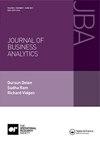预测客户的交叉购买决策:两阶段机器学习方法
IF 1.6
Q3 COMPUTER SCIENCE, INFORMATION SYSTEMS
引用次数: 0
摘要
预测客户的交叉购买行为对许多组织来说是一个具有挑战性的问题。在本文中,我们通过集成机器学习、特征工程和解释技术,提出了一种新的两阶段交叉购买预测框架。具体而言,第一阶段旨在通过交叉验证和超参数调优训练精确的复杂黑盒分类模型。然后,下一阶段使用黑箱模型的前十个最重要的预测因子来获得一个简单的基于规则的可解释模型。我们使用在哈佛数据库上发布的公开可用数据集来提供一个实际的案例研究。结果表明,基于规则的模型具有与复杂模型相当的预测性能。本文章由计算机程序翻译,如有差异,请以英文原文为准。
Predicting customers’ cross-buying decisions: a two-stage machine learning approach
ABSTRACT Predicting a customer’s cross-buying behaviour is a challenging problem for many organisations. In this paper, we propose a novel two-stage cross-buying prediction framework by integrating machine learning, feature engineering, and interpretation techniques. Specifically, the first stage aims to train an accurate complex black-box classification model with cross-validation and hyperparameter tuning. Then, the next stage uses the top ten most important predictors of the black-box model to obtain a simple rule-based interpretable model. We use a publicly available dataset published on the Harvard Dataverse to provide a practical case study. The results show that the rule-based model has a predictive performance as high as the complex model.
求助全文
通过发布文献求助,成功后即可免费获取论文全文。
去求助
来源期刊

Journal of Business Analytics
Business, Management and Accounting-Management Information Systems
CiteScore
2.50
自引率
0.00%
发文量
13
 求助内容:
求助内容: 应助结果提醒方式:
应助结果提醒方式:


